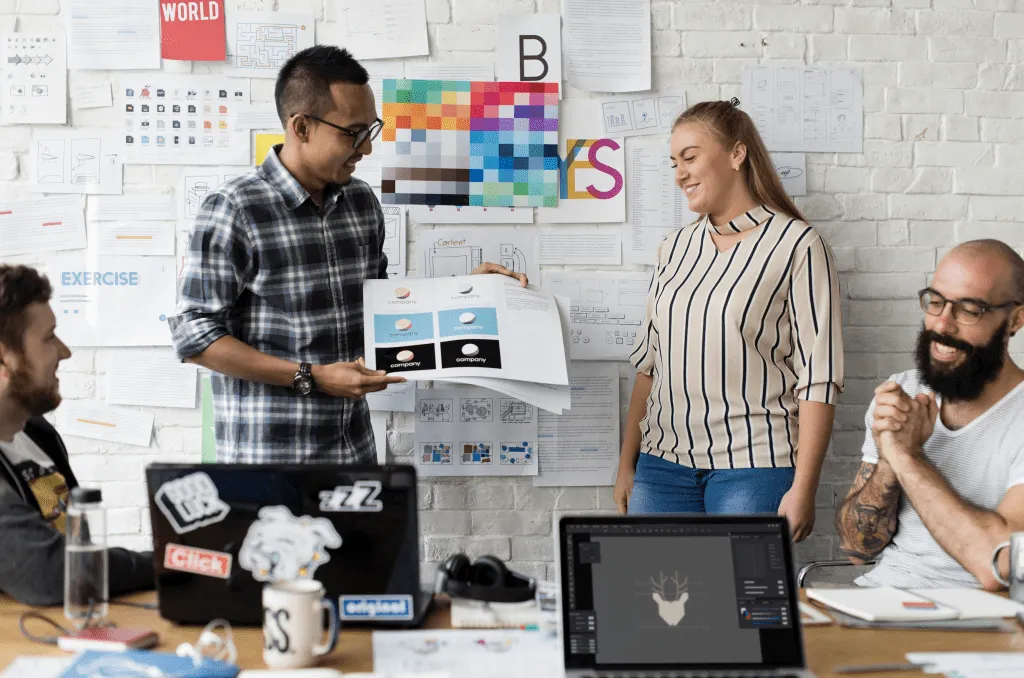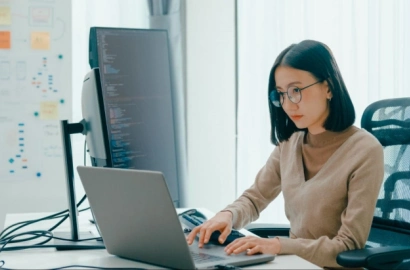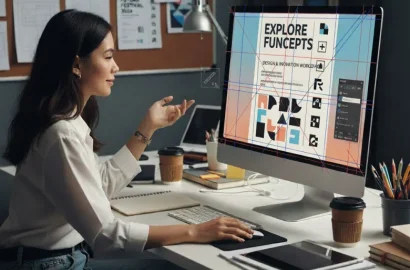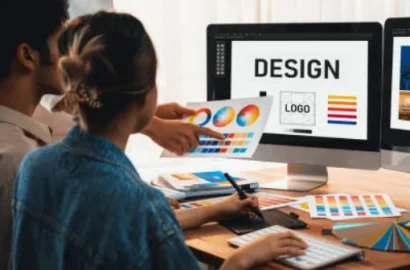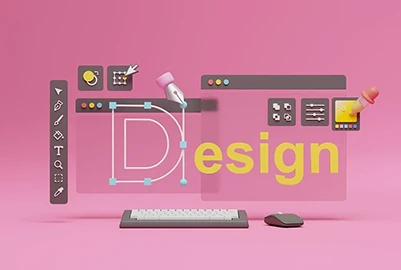Worried about AI taking over your job? Find out everything about AI in graphic design and how it can help you prepare for the future.
With AI adoption becoming a common practice in the design process, many ask: Will AI replace graphic designers, or is it simply an extension of their creative abilities? With just a few clicks, a text prompt, and sometimes a reference, AI can generate designs that would typically take hours to complete. Many renowned design tools now include AI features, and new AI-first platforms and frameworks are developing with every passing day. So, the concern, one would say, is perfectly valid.
In this article, we will explore how AI is shaping the future of graphic design, its impact on jobs, and how designers can leverage AI for innovation and growth. Whether you’re a graphic designer curious about the future of your career or an organization skeptical about the benefits of AI integration, you’re at the right place for answers.
Here’s a clickable link to everything we will cover in this article:
- Relevance of AI in graphic design today
- How will AI affect graphic design jobs?
- Will graphic designers be replaced by AI?
- Can there be a collaboration between graphic designers and AI?
- Limitations and ethical considerations in AI
- The future outlook for graphic designers
- Way forward
Relevance of AI tools in Graphic Design
AI design tools operate by processing vast amounts of data. They’re trained in thousands of color schemes, visual styles, fonts, and layouts. That’s why when you submit a prompt request, they generate results in no time. You can refine these prompts, make them detailed, attach a reference, and request design changes until you are satisfied. Some tools even adapt to your preferences and style of working over time, while others are great for quickly generating conceptual ideas and moodboards. Here’s our take on the relevance and role of AI in graphic design in the modern world:
1. Automation of tasks
The most notable impact of AI in graphic design has been its ability to automate repetitive and time-consuming tasks. Designers who would spend time resizing images, adjusting color schemes, or removing backgrounds can now give prompts to complete basic tasks.
Some of the best AI-powered tools that can speed up the graphic design process are MidJourney, DALL-E 2, and Adobe Firefly. For example, Adobe’s Content-Aware Fill fills in missing areas or eliminates unwanted elements from images.
So, when AI takes over mundane tasks, designers have more time to focus on the strategic and creative aspects of their job.
2. Ease of personalization
With AI, customizing designs has become quite convenient. Brands can use this tech to create personalized marketing materials and product designs that cater to individual preferences and behaviors. For example, e-commerce platforms can employ AI algorithms to suggest customized product designs, boosting user engagement and increasing conversions.
Personalization also impacts web design. AI-powered website builders like Wix ADI(Artificial Design Intelligence) and WordPress with Elementor AI Integration can automatically create websites based on user needs and preferences. This streamlines the design process while providing a more personalized and user-friendly experience.
3. Creative assistance
AI can also be a valuable source of inspiration and support for designers who experience a creative block. Platforms like Runway ML and Artbreeder utilize AI to create new images and compositions by merging existing ones. Designers can share their ideas, and AI tools can generate suggestions, helping them discover distinct combinations and styles to choose from.
Moreover, AI-powered tools for color palette generation and font recommendations support designers in making creative choices. These tools provide insights that help designers craft visually appealing designs by analyzing current trends and user preferences.
4. Feedback and collaboration
Collaboration is a core element of the design process, and AI has taken it to a whole new level, making it more efficient and accessible. Platforms like Figma and Adobe XD use AI to simplify design reviews and feedback. Designers can share interactive prototypes with clients and team members, allowing them to leave comments directly on the design. This accelerates the iteration process and ensures everyone involved is updated.
5. Design accessibility
AI is also making design more accessible to a broader audience, including specially challenged individuals. For example, AI-powered tools can automatically generate alt text for images, making them easier for visually impaired users to access. They can also help create color schemes that meet web accessibility standards, ensuring designs are inclusive and compliant with guidelines.
How will AI affect graphic design jobs?

Image Courtesy: Creative Alliance
AI is changing the graphic design industry in intricate ways, altering the skills, workflows, and expectations within the field. Instead of replacing design jobs, AI is reshaping them by automating tasks like layout creation, logo design, and image editing.
Although there are concerns that AI might reduce the number of traditional design jobs, it is more likely that AI will improve and not replace human designers. Designers who can apply their design skills and critical thinking to collaborate with AI will be in greater demand. In fact, graphic designers who gain expertise in AI may uncover new career paths, such as AI model training, AI art direction, and human-centered design.
Will graphic designers be replaced by AI?
This is by far the most dreaded question on everyone’s mind. Most creative professionals fear that AI may take over their jobs. While AI can produce visually impressive content, the power lies in human intervention. Your ability to tap into intuition, emotional connection, and cultural awareness gives depth and meaning to your designs. Generative AI can produce realistic and imaginative images based on your prompts, but cannot replace the human qualities of discernment, taste, and context.
As you improve your design skills, you’ll learn to direct and refine AI-generated content to suit your brand’s voice. The ability to effortlessly incorporate AI outputs into larger creative strategies is becoming a valuable skill. However, your approach, judgment, and understanding of design principles in complex contexts will continue to set your work apart. While AI image generation has come a long way since its early days, here are three reasons why it will never replace human designers.
1. AI lacks emotional intelligence and context
There are plenty of instances where AI misinterprets text prompts. While AI technology is constantly improving, it will never match the emotional and contextual insight that a human designer brings. Such misunderstandings can make the design process frustrating and slow you down if you rely on AI for graphic design. Poorly interpreted prompts can often lead to design blunders.
2. Humans drive innovation
Keep in mind that AI is dependent on machine learning, which means it’s limited to what the human brain has already discovered. If you’ve used AI tools for graphic design, you may have noticed that over time, the style and available options start to feel bland and restrictive. For mediocre designs, this isn’t much of an issue, but experienced designers may want a fresh perspective.
Since AI learns from human input, it’s not yet capable of offering groundbreaking ideas or innovations. This limitation can be particularly challenging for non-designers, such as marketers and agencies, who need to create graphics as per brand guidelines.
3. It’s all about the details
AI is known for missing details, particularly when dealing with complex images and text prompts. Some of these mistakes are initially subtle, but impossible to ignore once noticed. If you’re designing for a brand and need to stick to brand identity guidelines, using AI graphic design generators can be a major drawback.
Can there be a collaboration between graphic designers and AI?
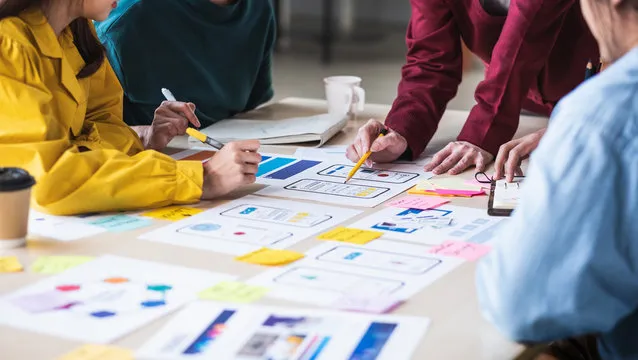
Image Courtesy: Adobe
Traditional graphic design techniques and updated AI-powered tools can collectively improve the creative process of a design project. Here’s what that will look like:
1. Use AI as your assistant
AI tools can handle various tasks that would typically take hours to complete manually, allowing you to move from the concept stage to the final product more efficiently. They can automatically apply styles to text, generate new images, and add or remove elements within images.
Many graphic designers have found that incorporating AI into their workflows has enhanced overall efficiency without compromising creativity. For freelancers, in particular, faster project turnaround can lead to more client opportunities, increased assignments, and higher earnings.
2. Hybrid approach
AI-generated visuals can become a source of inspiration, especially when you’re feeling stuck or need a fresh perspective. By generating unique ideas or providing suggestions that you might not have considered, AI can help push your creative boundaries. This hybrid approach — combining human creativity with AI assistance could lead to a new form of visual art, where AI doesn’t replace the artist but adds a new layer of experimentation.
Similar to how photography eventually gained recognition alongside traditional landscape painting, we may see AI-generated designs develop their own merit. Just as photographers use their expertise to frame and compose images in ways a camera alone can’t capture, graphic designers can shape AI-generated content, applying their creative judgment to shape the final design.
3. Evolving skill set
The only solution is to have a strong foundation in traditional design skills while also making the most of advanced technologies. By developing expertise with AI tools and improving your creative judgment, you can beat the competition and secure your career.
Familiarity with AI-assisted design tools can broaden your skill set and prepare you to cater to a diverse range of projects. Here are some of the best tools that can generate ideas, improve your workflow, and help you collaborate effortlessly:
– Adobe Firefly
– Canva
– Figma
– Autodraw
– InVision
– Marq
– Framer
AI adoption has made graphic design more accessible by reducing technical barriers, but it has also increased the importance of design skills. Understanding audience needs, effectively communicating ideas, and having a strong sense of aesthetics are areas where human designers will outrun even the most advanced AI tools.
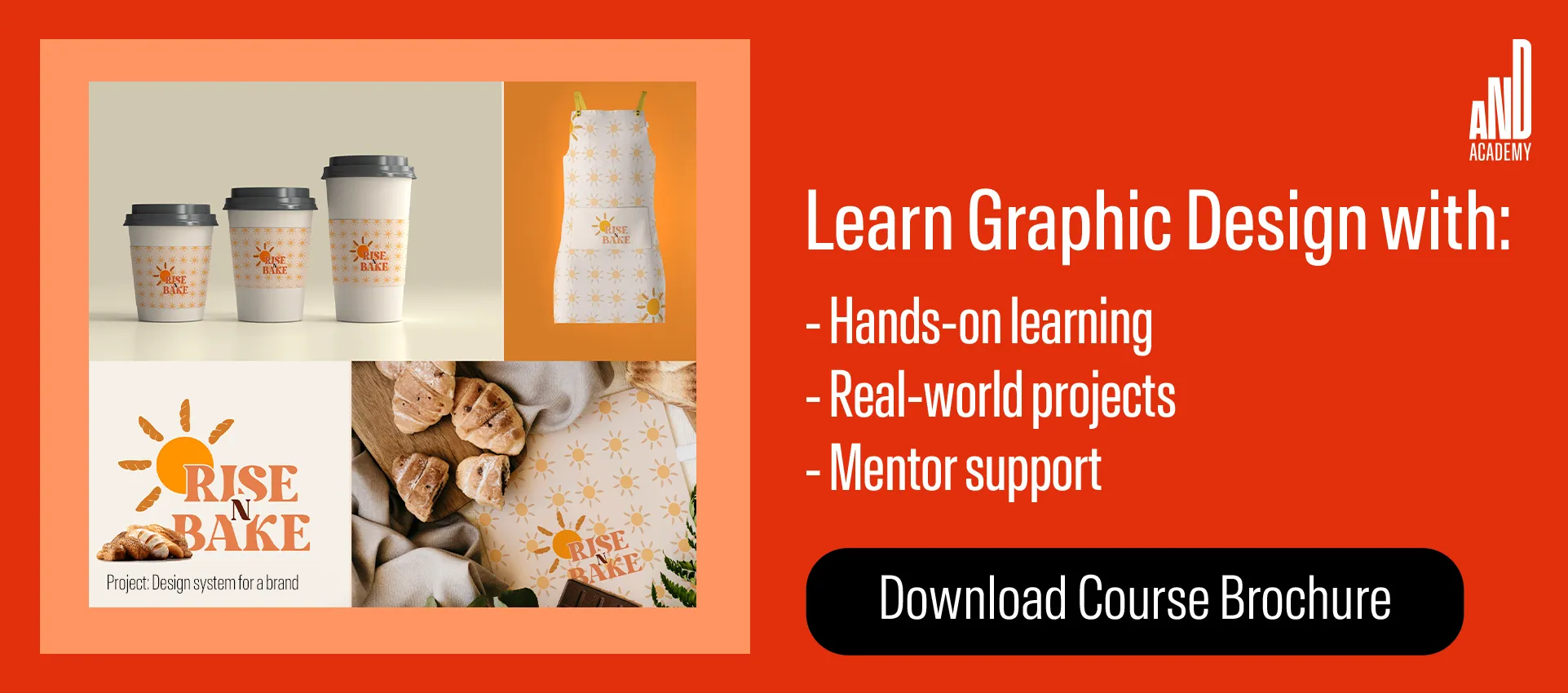
Limitations and ethical considerations in AI
The quality of AI-generated results is primarily influenced by the data on which they have been trained. If the data is inaccurate, incomplete, or biased, the results will be flawed, regardless of how precise your prompts are. While AI is good at following instructions, it cannot compete with human skills such as critical thinking, complex problem-solving, or understanding audiences. These skills are essential for interpreting brand identity, cultural content, and user expectations, and they are best handled by human designers. Here are a few things that you should know about using AI in your work as a graphic designer:
1. Intellectual property and copyright issues
AI-generated designs raise issues regarding intellectual property and copyright. There is ongoing debate about who owns the rights to such content — the human who wrote the prompt, the creators of the AI model, or whether the content is eligible for copyright protection at all. Figuring out who owns AI-generated content and where it originates can be tricky, potentially leading to legal conflicts. For example, asking AI to create images in the style of a specific artist could raise concerns about ownership and copyright infringement. Designers and organizations must establish clear guidelines and ethical practices for using AI-generated content while adhering to copyright laws and intellectual property rights.
2. Job replacement or expansion
A major concern in the design community is the potential for AI to replace jobs. As AI automates mundane design tasks, some worry it might take over human designers. However, a more balanced and realistic view is that AI amplifies the abilities of designers when used correctly. Designers can use AI to optimize workflow, freeing up time to focus on the larger scheme of things that require a human touch.
3. Accountability
Using AI in design also brings up concerns about transparency and accountability. As AI-generated content becomes more common, it can be difficult to determine the source or creator of a design. This lack of clarity can lead to ethical issues, such as misrepresentation or plagiarism. Ensuring clear boundaries in AI-driven design will safeguard the integrity of the creative process.
Future outlook for graphic designers
Experts predict growth in the AI industry, pointing to ongoing innovation and future opportunities. McKinsey’s “The State of AI” report in 2025 indicates a rise in AI adoption, with over 70% of organizations now using AI. With that, generative AI is also becoming more common and widely used.
Many graphic designers have realized that incorporating AI has increased their productivity, allowing them to take on more projects. In fact, designers are contributing to creating more intuitive interfaces, training AI models, and setting ethical guidelines for AI use in creative industries.
These advanced skills can now provide opportunities in traditional graphic design roles as well as emerging roles that integrate technology. Some skills that are particularly valuable for AI-related roles include:
- Human-centric interaction design — Creating experiences that focus on user needs and behaviors
- Systems design — Organizing complex components into functional and unified designs
- Visual communication — Converting ideas into powerful visual representations
Way Forward
We hope you’ve found the answers you were looking for in this comprehensive article and are no longer in two minds about AI’s integration in graphic design. The future of design lies in a combined effort of AI literacy and design skills, empowering designers to amplify their visual concepts and problem-solving abilities. Treat AI as your ally and experience how it can improve your workflows and expand creative possibilities.
Want to learn more about graphic design? These guides will help you build your skills and turn your ideas into reality:
1. The Significance of White Space in Design (With Examples)
2. 10 Best Graphic Design Apps To Count on in 2025
3. Exhibition Design: Principles, Types, Trends, and How To Become an Exhibition Designer?
Next Steps
If you’d like to know more about graphic design or related topics, head over to the AND Academy blog for more articles.
We recommend that you check out this project by AND Learner, Sannidhi Goyal, to get inspiration for your next work.
In case you need further assistance, here are some of our resources you can consider:
- Watch this session by design veteran and AND’s Academic Head, Prachi Mittal, and our Course Lead, Soumya Tiwari.
- Talk to a course advisor to discuss how you can transform your career with one of our courses.
- Pursue our Graphic Design courses – all courses are taught through live, interactive classes by industry experts, and some even offer a Job Guarantee.
- Take advantage of the scholarship and funding options that come with our courses to overcome any financial hurdle on the path of your career transformation.
Note: All information and/or data from external sources is believed to be accurate as of the date of publication.

